
Home to Canberra’s only EOS service, CIG is now offering EOS at our Deakin rooms.
Information below is designed for both referrers to the service and patients of the service. Patients, please use our online booking form to request an appointment.
Request AppointmentDownload our EOS flyers:
Download the EOS Referrers GuideDownload the EOS Value Summary
Download the EOS Scanning Flyer
EOSedgeTM : low dose imaging solution for musculoskeletal pathologies and orthopedic care
EOSedge is an innovative imaging platform that delivers 2D/3D frontal and lateral full body, weight-bearing images using a low dose of radiation.
Designed to improve the management of musculoskeletal pathologies, EOSedge allows personalized diagnosis and treatments based on high-quality images.
EOSedge is a biplane system that delivers, full-body – or specific region – 1:1 scale images and accurate 2D/3D anatomical data of pediatric and adult patients in functional position.
EOSedge combines the latest technological innovations in X-ray detection, low-dose radiation, and high image resolution (spatial resolution up to 5 lp/mm). The system incorporates Flex Dose™ technology to modulate radiation dose along the patient’s scan as well as high-resolution photon counting detection to provide optimal image quality for musculoskeletal radiography.
EOSedge is also designed to improve patient comfort and maximize throughput. Its open cabin includes a motorized platform which enables easy access to a broader range of patients, and faster patient positioning, in addition to delivering large fields of examination (up to 51 cm width x 190 cm height)
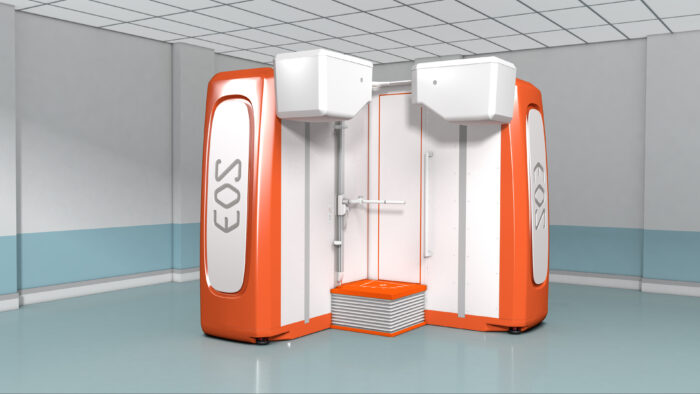
EOSedge presentation
EOSedge is a biplane system using two perpendicular X-ray beams that move vertically to scan the patient’s body. It allows to capture simultaneously frontal and lateral images of the full body (or specific region), in an upright, physiological weight-bearing position, with low dose of radiation.
These images can be used to generate 3D models and measurements that provide a three-dimensional understanding of a patient’s deformation.
EOSedge benefits
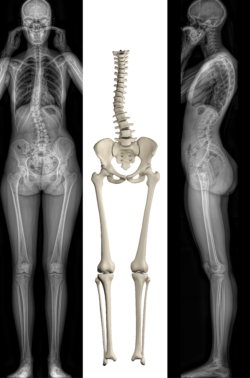
Reduced radiation exposure
Flex DoseTM modulates the radiation along the patient’s scan and thus minimizes the dose of the examination, while generating high-quality images necessary for our physicians to establish an accurate diagnosis. With an EOSedge Flex Dose exam, there is 5 time less dose on average compared to DR 1,2.
Some pathologies, such as scoliosis and lower limb deformities require monitoring over time to assess the disease progression and repeated imaging. Dose reduction is particularly beneficial for pediatric patients who are more susceptible to the adverse effects from medical radiation.
EOSedge Micro Dose exams further reduce radiation exposure for follow-up imaging exams. When monitoring pediatric disease progression, a follow up pediatric spine exam, using the Micro Dose feature, delivers only a week’s worth of natural radiation3 resulting in 28 time less dose on average with EOSedge compared to DR 1,2.
Full body, weight bearing images
With EOSedge, patients are scanned while standing or in a seated position. Full body, weight bearing images provide a global assessment of the patient’s skeletal system in functional position with better comprehension of compensatory mechanisms between the spine, pelvis, hip, and knee. If 3D information is requested, it will allow to assess the three-dimensional deformations of the patient in a functional position.
Patient-centered design
EOSedge’ s open cabin design allows medical teams to capture full body images safely, quickly, and comfortably for a wide range of patients. Its large acquisition zone and accessible design enables easy entry and positioning for children, elders, and other patients.
An EOSedge exam is fast: a full body acquisition lasts on average 5 seconds for a child, 15 seconds for an adult. Acquired 2D images are immediately available.
EOSedge, for which orthopedic conditions ?
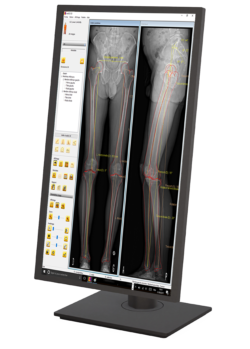
EOSedge allows the 2D/3D analysis of skeletal alignment disorders in a functional position and is available at each step of the patient care pathway: precise diagnosis, advanced therapeutic plan and control of the orthopedic treatment.
Common adult and pediatric osteo-articular disorders that may benefit from an EOSedge exam:
Spine:
- Pediatrics: scoliosis, postural disorders
- Adult: postural disorders, deformative, and degenerative spine pathologies
Pelvis and Lower limbs:
- Pelvis deformities and postural disorders
- Lower Limb deformities: Leg length discrepancies, varus/valgus flexion/extension, torsional abnormalities
- Management of hip and knee replacement surgeries
Here is an example of our EOS specific referrals, and a button to use to place an order for some referrals. However you can request an EOS study on any referral:
Order EOS Referral Pads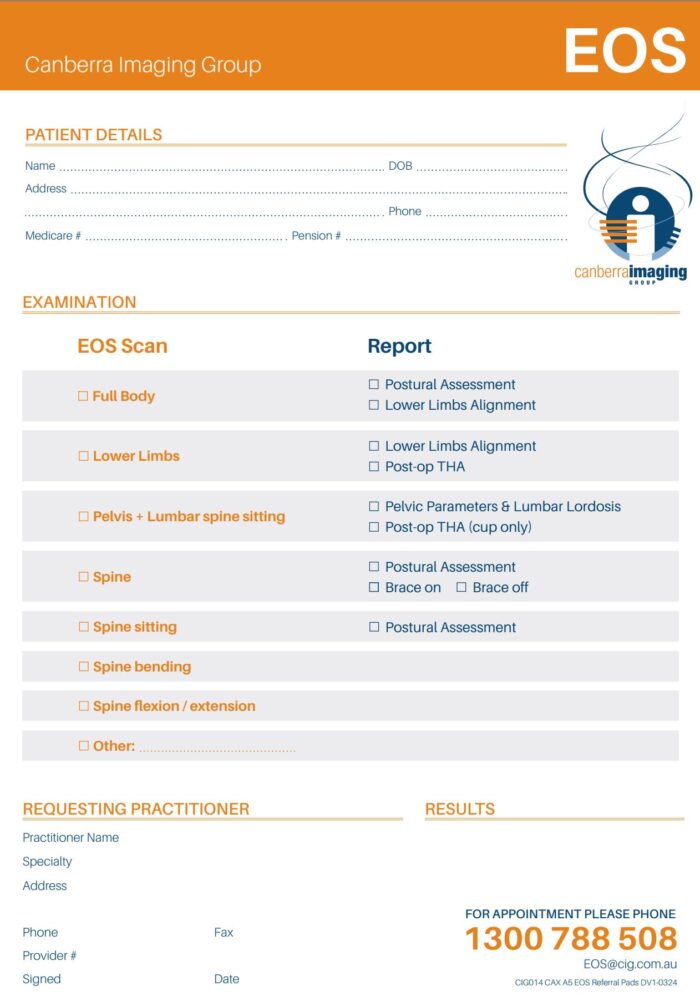
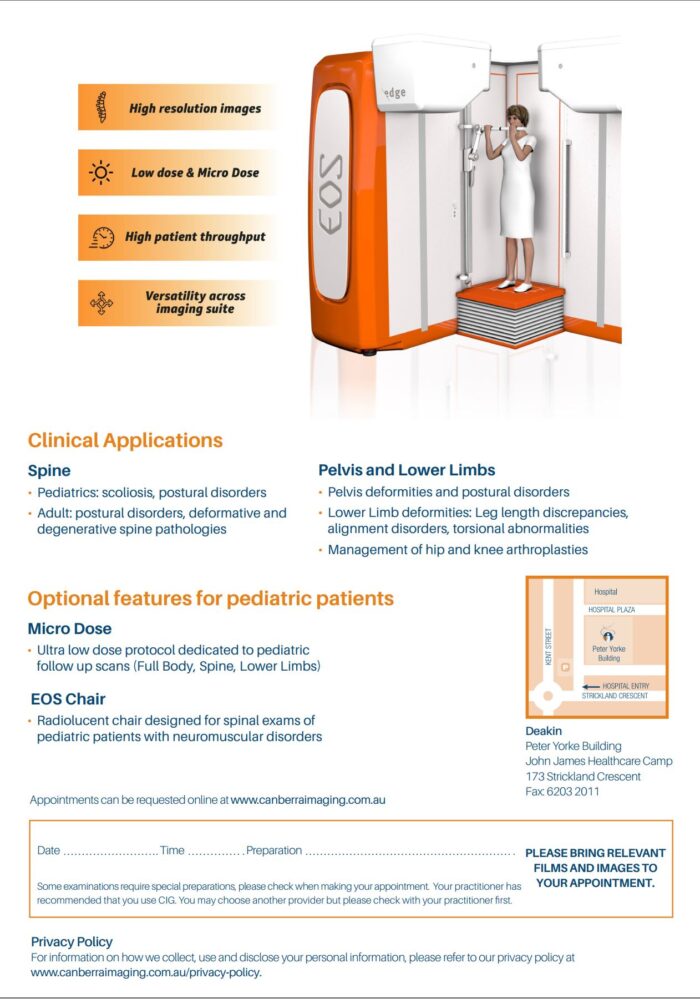
-
Radiation exposure comparison across longitudinal scoliosis follow-up: digital radiography versus EOSedge, *Guerra R, Feuerstein P, Barakat N, François JB, June 2022
-
Boissonnat G, Morichau-Beauchant P, Reshef A, Villa C, Désauté P, Simon AC. Performance of automatic exposure control on dose and image quality: comparison between slot-scanning and flat panel digital radiography systems. Med Phys. 2022 Sep 7
-
Iharreborde, Brice, et al. “EOS Microdose Protocol for the Radiological Follow-up of Adolescent Idiopathic Scoliosis.” European Spine Journal, vol. 25, no. 2, 2015, pp. 526–531., doi:10.1007/s00586-015-3960-8.